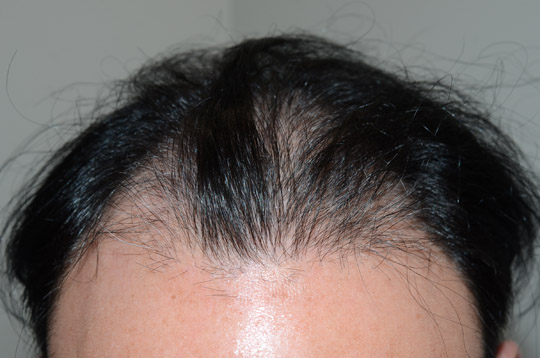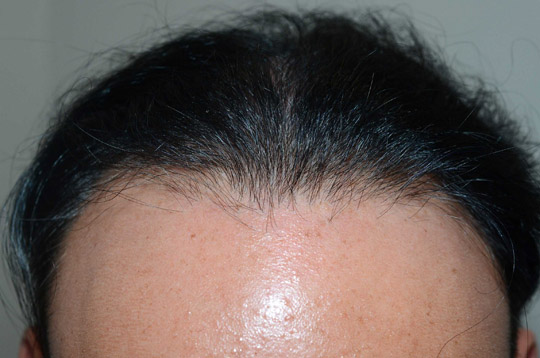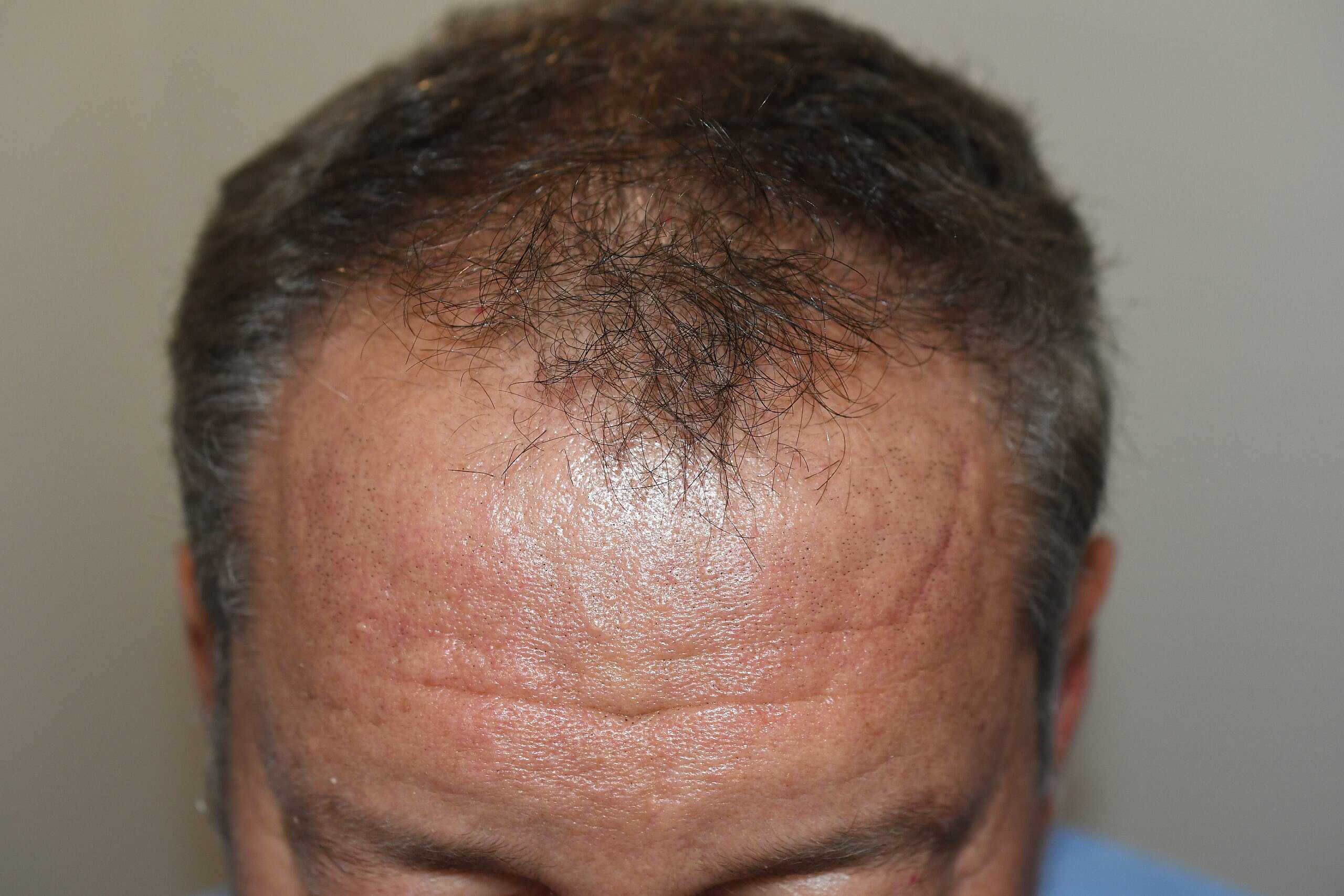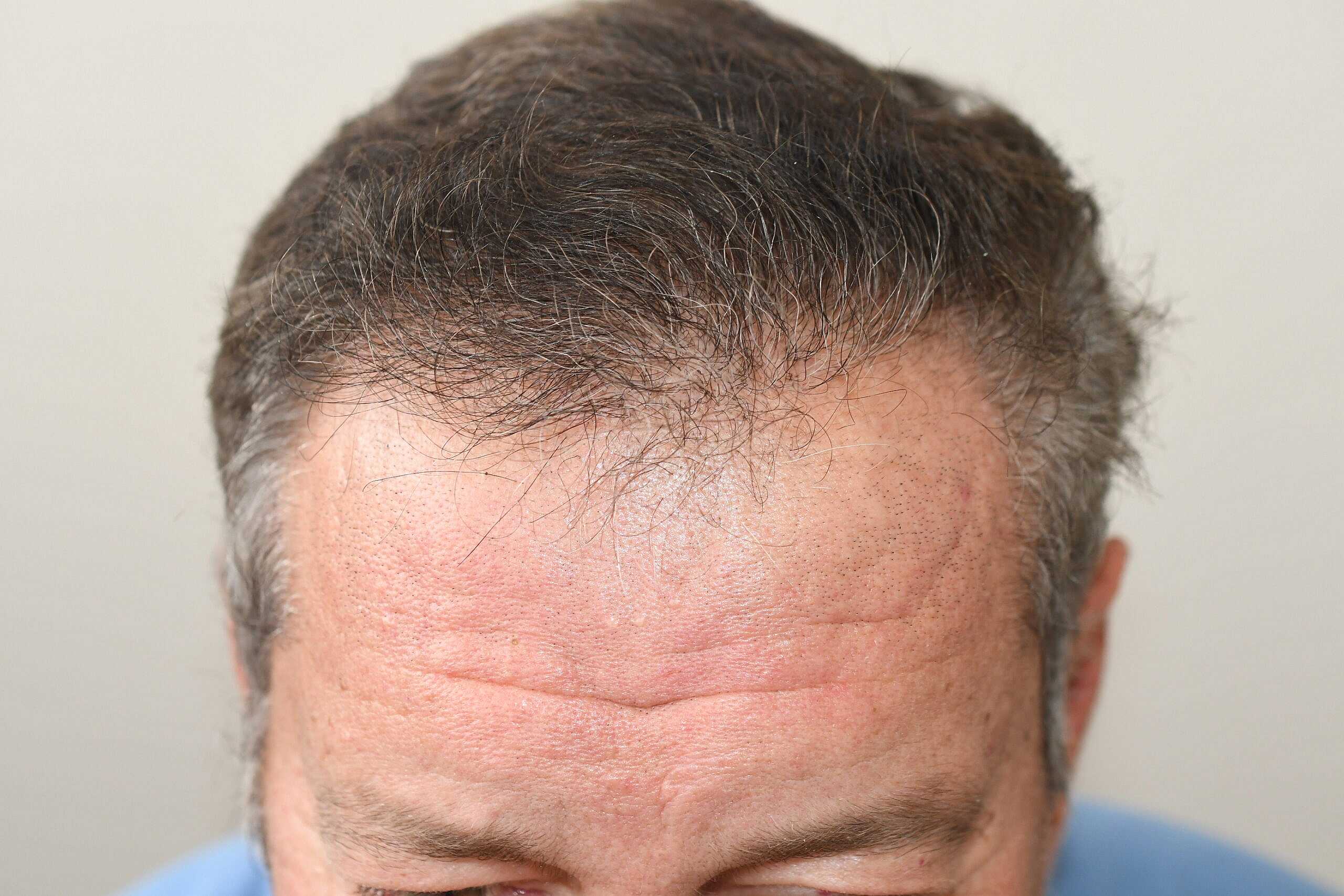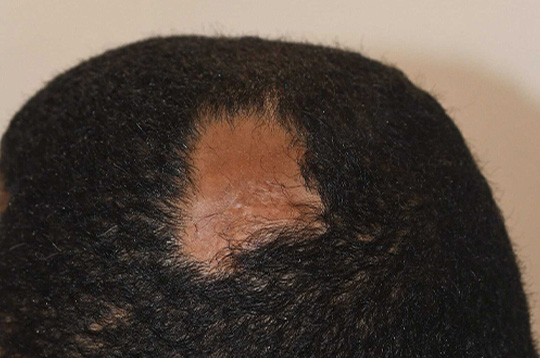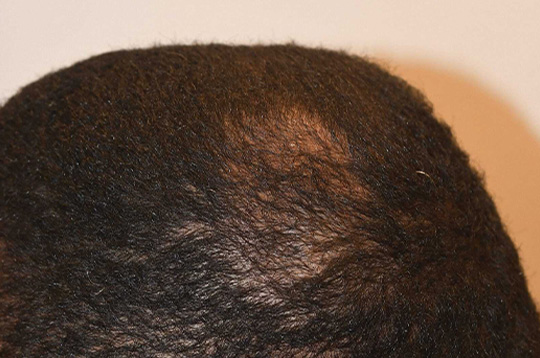Follicular unit extraction (FUE) at Foundation Aesthetic Hair Restoration is a state-of-the-art hair transplantation technique. FUE involves meticulously extracting individual hair follicles and implanting them for undetectable results with minimal scarring and downtime. Most importantly, our plastic surgeons are experienced in designing and carrying out the steps needed to ensure a natural appearance.
Follicular Unit Extraction (FUE)
ACTUAL PATIENT
Transplant hair with undetectable scars
Follicular unit extraction (FUE) is a cutting-edge hair transplantation method that involves harvesting individual hair follicles from a donor area and implanting them into thinning or balding regions. FUE uses tiny punches, typically 0.8 to 0.9 millimeters in diameter, to extract follicles, resulting in virtually undetectable scars. Each extracted follicle is microscopically cleaned and prepared before being implanted into the recipient area, using implanters ensuring optimal growth and natural-looking results.
One of the key advantages of FUE is its versatility. Hair follicles can be harvested not only from the scalp but also from other parts of the body, particularly the beard, making it an excellent option for individuals with limited donor hair. This technique is particularly beneficial for those seeking a minimally invasive procedure with a high success rate and minimal downtime and with our no-shave approach, patients can be fully presentable the very next day. With FUE, patients can achieve fuller, natural-looking hair without the noticeable scarring associated with older transplantation methods.

ACTUAL PATIENT
Follicular unit extraction (FUE) helps with:
- Male and female pattern baldness
- Thinning hair on the scalp
- Receding hairlines
- Bald patches
- Hair loss due to trauma or injury
- Reparing previous unaesthetic hair transplant procedures through the technique of FUE removal
- Restoring fuller eyebrows and beards
- Facial hair loss, including beard and mustache areas
- Hair loss due to genetic factors
- Thinning or missing hair from medical treatments (e.g., chemotherapy)
Benefits of follicular unit extraction (FUE):
- No linear donor site scar
- Minimally invasive procedure
- Faster recovery time
- Virtually painless with minimal discomfort
- High success rate with natural-looking results
- Ability to harvest scalp hairs from different areas of the scalp to most closely match the desired texture and curl (i.e. selecting finer hairs from the lower back of the head, the frontal hairline).
- Ability to harvest hair from various body areas (beard, chest, etc.)
- Suitable for different hair types, including curly and ethnic hair
- Individual follicle extraction for precise placement
- Minimal risk of complications
- Quick return to daily activities
The three available FUE techniques
No-shave FUE
No-Shave FUE is a specialized technique where the donor area is not shaved, making the procedure undetectable after the surgery. In this method, only the individual hairs to be transplanted are trimmed, while the surrounding hair remains intact. This is ideal for patients who wish to maintain their appearance without noticeable changes. The No-Shave FUE technique allows patients to return to their normal activities almost immediately without the need for hats or other coverings.
Partial-shave FUE
Partial-Shave FUE involves shaving only portion of the donor area, typically the lower back of the head that is suitable for patients with medium to short hair to mimic a fade, or 2 to 3 “tunnels” that is appropriate for patients with medium to long hair, as the shaved area can be easily covered by the remaining hair above. The partial shave provides a balance between the higher cost of the no-shave approach and, in most cases, the concealing of the donor area.
Regular FUE
Regular FUE, also known as Full-Shave FUE, involves shaving the entire donor area, typically the back and sides of the head. This is the most common method and allows for the fastest harvesting of follicles. With the donor area fully exposed, the largest number of grafts can be extracted in the shortest time. The shaved area heals quickly, usually within two to three days, and the hair grows back without noticeable scarring. This is ideal for patients seeking extensive hair restoration at the lowest cost.
Note that no matter the FUE technique, it is never necessary to trim any of the hairs in the recipient areas. In fact, our plastic surgeons prefer to leave the hairs of the recipient over their normal length to best appreciate the natural direction of hair growth as well as where grafts are needed.
How does follicular unit extraction (FUE) surgery work?
The FUE procedure starts with a restoration design, where the surgeon collaborates with the patient to create a customized plan. Under oral sedation, or twilight sedation if preferred, and local anesthesia, the donor area (usually the back or sides of the head) is numbed to ensure comfort. Once the anesthesia takes effect, a specialized device is used to extract individual hair follicles. Each follicle is carefully removed using tiny punches, typically 0.8 to 0.9 millimeters in diameter, ensuring minimal scarring. The extracted follicles are then microscopically trimmed and preserved in a transplant solution to maintain their viability.
After the extraction phase, the recipient area is anesthetized then the surgeon creates tiny incisions where the hair follicles will be implanted. This step requires precision and artistry to ensure ideal angle, direction, and density of hair growth. Each follicle is then implanted individually using state-of-the-art implanters. Depending on the number of grafts, the entire procedure requires 3 to 10 hours. After the surgery, you will receive detailed aftercare instructions to promote healing.

ACTUAL PATIENT
Recovery time after follicular unit extraction (FUE) surgery
After FUE surgery, you can expect a relatively quick recovery. In the first few days post-surgery, you may experience mild swelling and discomfort around the donor and recipient areas. Tiny red dots will form at the sites where follicles were extracted, which resolves in 3 days. Meanwhile, tiny scabs, which form where each implant is placed, typically heal within a week. It’s crucial to follow the post-operative care instructions provided by your surgeon to ensure optimal healing.
Within one to two days, most patients can return to non-strenuous activities, although it’s advisable to avoid heavy exercise or activities that may strain the scalp for 5 days. The transplanted hair typically falls out after a few weeks, a normal part of the process. New hair growth usually begins around 3 months later, with full results visible within 10 months to a year.
Follicular unit extraction (FUE) FAQs
Is FUE hair transplant permanent?
Yes, FUE hair transplants are permanent. The transplanted hair follicles are resistant to the hormone that causes hair loss, ensuring long-lasting results. However, it’s important to maintain a healthy lifestyle and follow aftercare instructions to preserve your new hair and help maintain the health of your existing hair.
Does donor area hair grow back?
The donor area will not regenerate the extracted follicles. However, the FUE technique leaves surrounding hairs intact, making the thinning in the donor area hardly noticeable. Over a matter of a week, the remaining hair in the donor area can cover the small extraction sites.
Is FUE hair transplant painful?
FUE hair transplants are truly not painful in nearly all cases due to the use of local anesthesia and if desired sedation and/or laughing gas. Post-operative discomfort is usually minimal and can be managed with over-the-counter pain medication.
Does FUE hair transplant leave scars?
FUE leaves tiny, dot-like scars that are virtually undetectable. Unlike the linear scars associated with traditional hair transplant methods, these scars blend seamlessly with your natural hair. The use of the WAN system assures the smallest possible dot scars
Can FUE fix a previous hair transplant?
Yes, FUE can improve the unnatural looking grafts and cobblestoning from poorly performed previous hair transplants. Using the technique of FUE, a skilled surgeon and his team can carefully remove prior placed grafts, creating more natural appearing results.
Initiate your end-to-end hair restoration experience
Foundation Aesthetic Hair Restoration is your premier choice for advanced, personalized hair restoration. Led by Dr. J. Epstein, our clinic offers cutting-edge techniques like follicular unit extraction (FUE) to ensure natural-looking results with minimal downtime. Our holistic approach combines medical expertise with artistic precision, providing a seamless experience from consultation to recovery. Schedule your consultation to reclaim dense, luscious hair.
ACTUAL PATIENT
Contact Us Today
Start Your
Journey
Have questions? Reach out today
for answers and more information.

